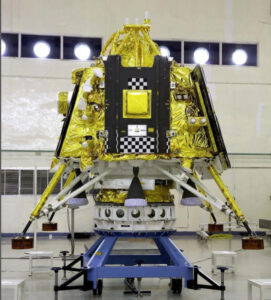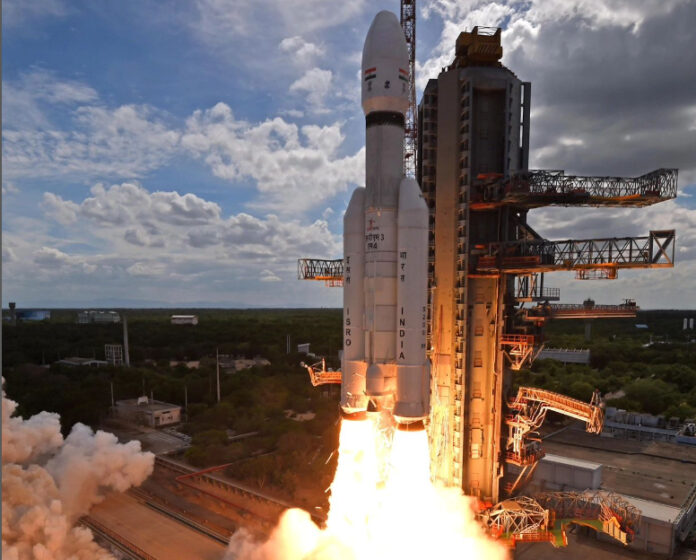Despite the catastrophic crash of Russia’s lunar spacecraft on Sunday, this is a week that has etched its name into the annals of space exploration. This morning, the Indian Space Research Organization (ISRO) made history with their ambitious Chandrayaan-3 mission, which landed on the moon, making India only the fourth nation to manage the feat and the first to land at the lunar south pole.
India’s journey to the moon is not a new venture; it commenced in 2008 with the Chandrayaan-1 mission, featuring a lunar orbiter and impactor. Chandrayaan-1 played a pivotal role in fostering space science awareness among the general populace. However, India’s maiden soft landing attempt with the Chandrayaan-2 mission in 2019 ended in disappointment, as the lander, Vikram, failed in the final stages of its descent, colliding with the lunar surface. Nevertheless, the accompanying Chandrayaan-2 orbiter has continued to gather invaluable data, lending support to the current lunar landing endeavour.
A unique challenge
 The moon, our celestial neighbour, presents a uniquely daunting challenge for lunar landings. Unlike Earth or Mars, the moon lacks an atmosphere, offering no natural cushion to slow down descending spacecraft. Traditional landing methods involving parachutes or gliders are untenable. Instead, a controlled descent using rockets is the sole recourse. Yet, this controlled descent requires precision; the rocket engines must shut down at a precise moment to prevent an inadvertent bounce off the lunar surface.
The moon, our celestial neighbour, presents a uniquely daunting challenge for lunar landings. Unlike Earth or Mars, the moon lacks an atmosphere, offering no natural cushion to slow down descending spacecraft. Traditional landing methods involving parachutes or gliders are untenable. Instead, a controlled descent using rockets is the sole recourse. Yet, this controlled descent requires precision; the rocket engines must shut down at a precise moment to prevent an inadvertent bounce off the lunar surface.
Moreover, the moon, seemingly desolate, conceals its share of hazards, chiefly in the form of treacherous rocks and craters. Due to this terrain and the moon’s considerable distance from the Earth, landers must be pre-programmed to execute manoeuvres for a safe landing before they have departed.
In the days leading up to the final touchdown, Chandrayaan-3’s progress had been promising, with successful entry into lunar orbit and the separation from its propulsion system. Nonetheless, those close to the operation expressed concerns as the lander neared the most perilous phase – the final braking stage. To achieve this morning’s landing, the lander had to rapidly decelerate, hover about a kilometre above the lunar surface, and then make a rapid decision, in under 12 seconds, regarding whether or not it is, in fact, perfectly above its designated landing point.
An historic achievement
The success of Chandrayaan-3 not only marks an historic achievement in India’s history but also holds profound scientific significance. Unlike previous lunar landers, Chandrayaan-3 is set to explore the moon’s south pole, where the presence of water deposits is strongly suspected. Water on the moon holds immense potential as a resource for future space exploration endeavours, serving as both a source of sustenance for astronauts and a vital component of rocket fuel.
Accompanying Chandrayaan-3 is a small rover named Pragyan, equipped with two spectrometers capable of analyzing rock and soil compositions, shedding light on this previously uncharted lunar territory.
The lunar south pole is a strategic target in NASA’s Artemis program, designed to pave the way for semi-permanent human habitation on our nearest celestial neighbour. India, having signed the Artemis Accords in June 2023, aligns itself with other spacefaring nations in cooperative lunar exploration efforts. Collaborations like the one between India and Japan, which aims to drill into the lunar south pole in search of more water, are poised to benefit from India’s successful lunar landing.
This achievement will catalyze renewed Indian, and potentially global, enthusiasm for lunar exploration. In a world where more nations aspire to reach the moon, each success and failure offers invaluable lessons to refine future lunar endeavours.


